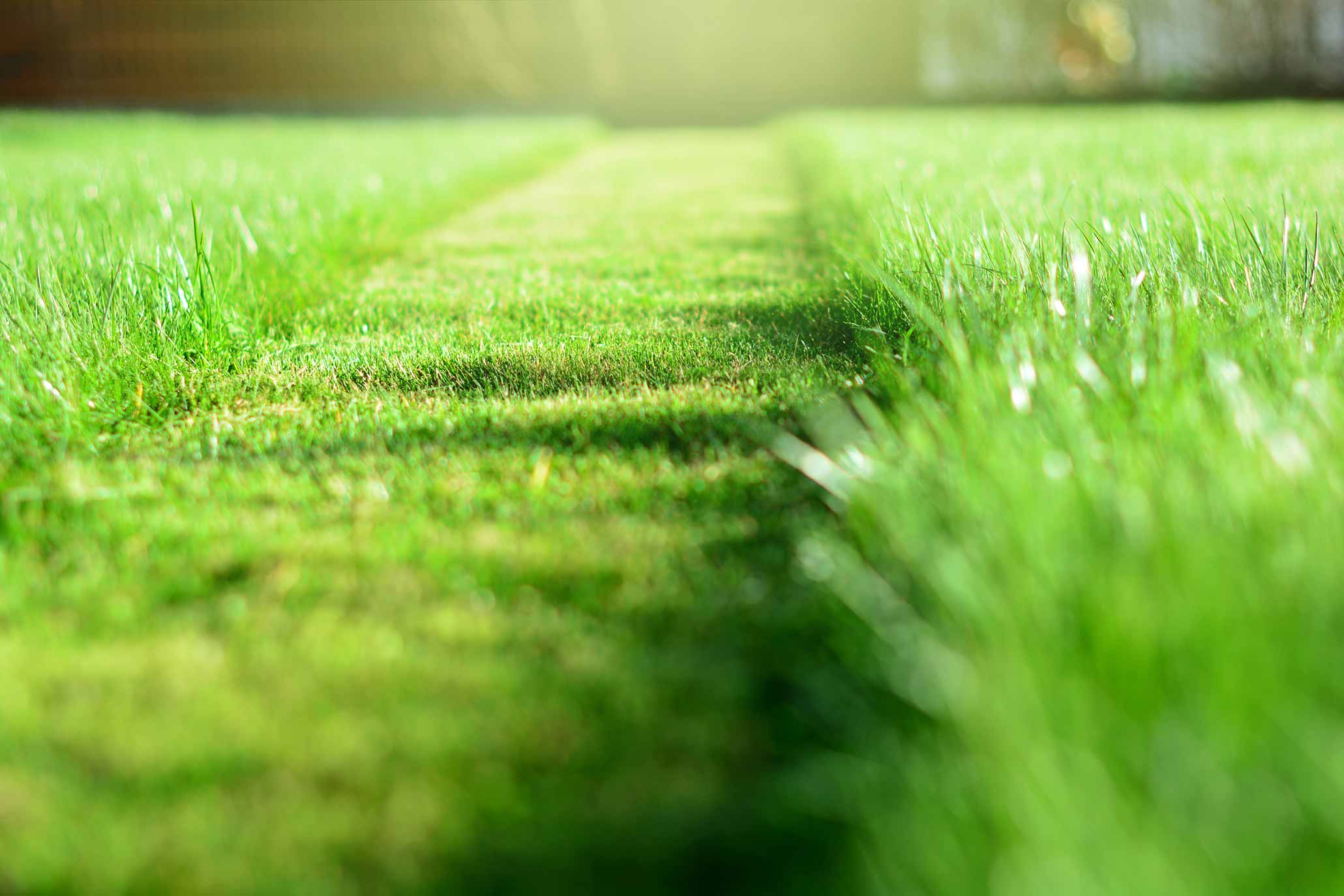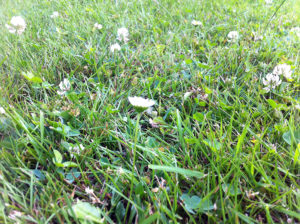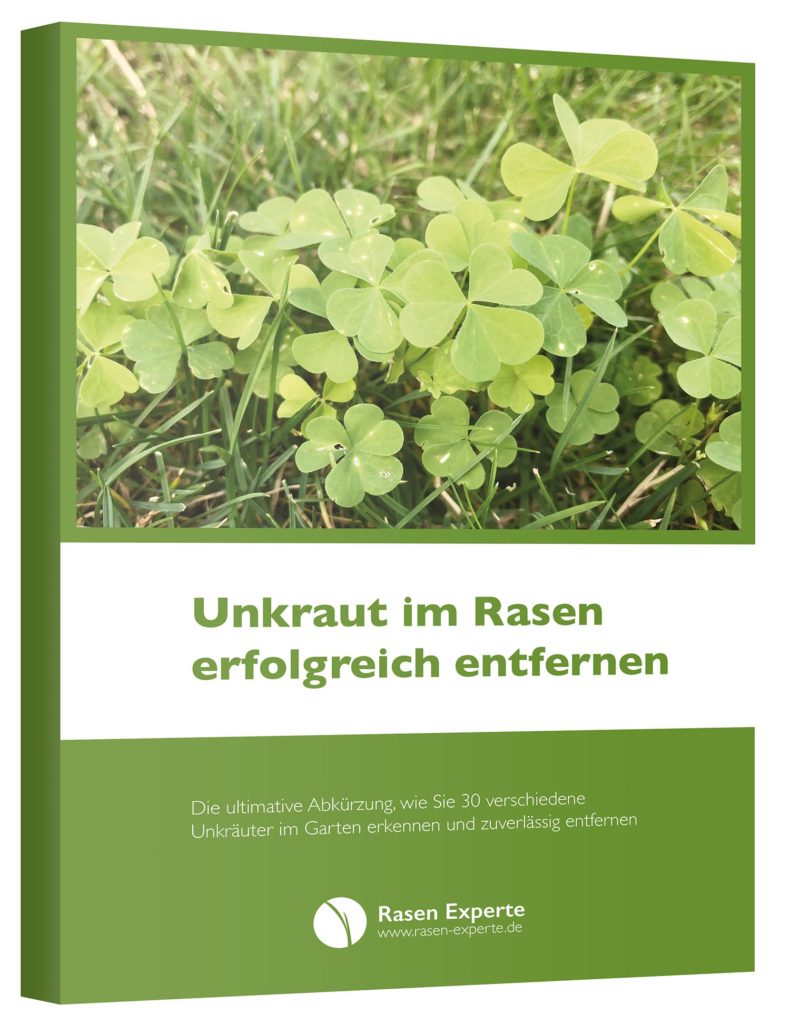I don’t need to tell you that a healthy lawn has to be maintained permanently. This is much more exciting: HOW does a lawn have to be maintained? Mowing lawn is definitely at one of the forefront when it comes to lawn care.
Today I would like to take you with me and give you some clues on how to mow your lawn so that it always comes in a strong green and announces the fight to the moss with all the power of nature.
- What do I need to mow the lawn?
- When is the optimal time to mow my lawn?
As you have already learned in our last article about sowing lawn, the right time determines the success of a beautiful lawn.
If you have already laid the foundation stone and properly watered your lawn and fertilized regularly, then the lawn mowing comes into the game.
The art of controlled trimming of the lawn is to challenge it in the best possible way, but not to overload it at the same time. By cutting off the lawn plants regularly during lawn mowing, you ensure that they regrow strongly and this growth makes the plants stronger and stronger.
This phenomenon can be compared with the growth of beards: at first, tender hairs grow, which, with regular shaving, are grown into real stubble. This principle is also applied when mowing the lawn.
Plan de l'article
- Why shouldn’t you overstrain the lawn?
- When should you mow the lawn for the first time after sowing?
- In what weather should you mow your lawn?
- When should you mow your lawn after fertilizing?
- What do you need to consider when caring for lawns in autumn and winter?
- When are you allowed to mow lawn and what rest periods are there?
- What can you do with lawn cutting or where can you dispose of it?
Why shouldn’t you overstrain the lawn?
If you mow your lawn too short, the grass plants need an immense effort to continue growing. Weeds and moss like to take advantage of this situation in order to displace the already weakened plants and to be able to spread themselves.
Basically, the lawn should not be mowed in winter. Only when the first The sun’s rays come out and the temperatures rise, the lawn will also find back to old activity.
As a rule of thumb, the first lawn mowing can be done in April . Mowing too early can overstrain the lawn (see above), but a first cut too late ensures that weeds can spread.
Generally it can be said that in high season a lawn should be mowed 1-2 times a week (depending, for example, on climatic conditions, fertilizing behaviour and intensity of irrigation).
The final step of the lawn is carried out approximately at the end of October/beginning of November to prepare the lawn for autumn.
Tip: Remember to sharpen the blade of the lawn mower (whether electric or petrol) regularly. Only with a sharp knife can you achieve optimal cutting results.
Now there are a few more questions that I would like to highlight in more detail below:
When should you mow the lawn for the first time after sowing?
Regular lawn mowing ensures an even and healthy lawn Before the first mowing, allow the lawn to grow to approximately 7 — 8 cm so that the roots already have the necessary stability and the lawn becomes nicely dense.It is also very important that you start slowly at the first cut and first mow at the highest step.
Then gradually reduce the steps until you reach the desired lawn height.
Ideally, cut adecorative lawnto about 2.4 — 4 cm and aplay lawn to about 3 — 4.5 cm. If you cut the lawn too much, the growth can stall — as a rule of thumb, you can safely mow 1/3 of the lawn height.
eBook: Successfully remove weeds in the lawn
valuable & smart tips for a weed-free lawn. On more than 110 packed pages you will find plenty of exclusive information on how to make your lawn weed free. Individual tips for the That eBook for real lawn experts with 30 most common weed species. The eBook has already proven itself a hundred times.
Back up now In addition to the death of lawns, too short a cut can also lead to the tendency of uncontrolled lateral shoots. This in turn leads to a very uneven lawn with many gaps and a low foot-resistance.
If you leave the grass too high, there is a certain challenge for the lawn to grow higher and thus the grass plants lose strength.
In what weather should you mow your lawn?
For lawn mowing, it is best to choose a dry day, when the grass and soil are also as dry as possible. The advantage of this is that the lawn does not stick to the knife and the lawn mower can cut the plants cleanly. In addition, this ensures that you catch all the blades of grass as possible and that no one has fallen through the moisture and is lying on the ground.
All this promotes an even cut, which is a prerequisite for a visually beautiful lawn.
Ideally, don’t mow your lawn in the plump midday sun. It is better to shift this activity to the evening — afterwards you can water the freshly cut lawn comfortably and have done the gardening in one go.
When should you mow your lawn after fertilizing?
Above I have already described that regular fertilizing can help the lawn to healthy and fast growth. Of course, this also leads to the fact that you have to mow the lawn more often. Immediately after fertilizing, it may happen that you no longer only 1-2 x lawn mowing should be per week, but if necessary 2-3 x.
The advantage here is that a dense lawn that is mowed regularly is also less susceptible to moss and weeds. And in the end this is the goal of every lawn lover.
In midsummer, you can make the lawn grow a little longer, so the green carpet can retain more moisture and burn less quickly in the heat.
What do you need to consider when caring for lawns in autumn and winter?
Even in winter, you can leave the lawn a little longer. Here, many close-fitting blades of grass ensure that they are not so susceptible to snow and frost.
When the year is coming to an end, the frequency of lawn mowing can be significantly reduced. The last time the lawn should be cut just before the first frost — then you don’t need to mow and should no longer do.
Before this growth break determined by nature, you can add a little autumn or winter fertilizer to your lawn so that it can fall into “hibernation” strengthened. This fertilizer once again helps to reduce brown or bald spots due to a harsh winter.
Tip: Try to enter the lawn as little as possible in winter, frozen blades of grass quickly break off.
When are you allowed to mow lawn and what rest periods are there?
In summer, when the lawn is to be mowed twice a week, there are often disagreements between neighbours — especially when a neighbor does not adhere to the rest periods of lawn mowing.
For the sake of neighborhood peace, you should be careful not to mow on Sundays or holidays. Even on a late summer evening, your neighbors may want to spend their free time comfortably on the terrace and do not noisy lawn mower next door.
Professional hobby gardeners in particular often give way to the evening hours to care for their lawn. Theoretically not a problem, as long as you can finish the work by 7pm. In the morning, early risers can start mowing from 7 am.
More information on this topic can be found here: Lawn time — When can I mow my lawn?
What can you do with lawn cutting or where can you dispose of it?
Before you dispose of the lawn cut in the organic bin, you can distribute it perfectly as a fertilizer on your beds.
This thin layer on the beds ensures that weeds are destroyed underneath and returns valuable nutrients to the soil in the subsequent process of rotting.
However, if you do not have any flower beds in your garden, then the organic bin is ideal for cutting the lawn. dispose of it. Alternatively, you can compost. After rotting, the compost will give you the finest soil that can be used anywhere — a very cost-effective method of processing biological waste.



